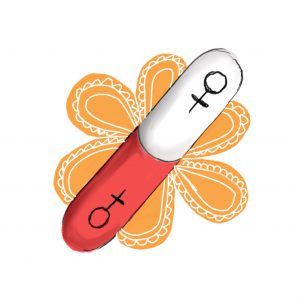Sexism In The Medical Field

Serena Williams, a 23-time Grand Slam winner, gave birth for the first time. Afterwards, she suffered from complications that left her bedridden for more than a week. Although she has a history of blood clots, the nurse she notified didn’t believe that her symptoms were real. Featured in Vogue, HuffPost and just about every other trendy publication, her story resonated with many women.
Yentl syndrome is described as the different course of action likely to be taken for female medical issues compared to males. Originally, the syndrome was inspired from a trend concerning women receiving less aggressive and less effective heart attack treatments, because their symptoms often differ from men’s symptoms. The syndrome’s name was taken from a short story about a Jewish woman who lived as a man in order to continue religious studies. The issue stems from males being prioritized in research, which range from research from animals to cells. Action has been taken from the National Institute of Health to make sure that sex is considered as a variable in medical research and analyses. Unfortunately, it will probably take some time to counter the issue.
I am not surprised that this is still happening in 2018. Although there have been many medical and social advancements, the average age of doctors is 46 years old with a higher percentage of males having tenure, according to Date USA. This means they have already spent a large part of their career strengthening the biases that they have learned throughout the years, which are not easy to get rid of by simply adding new policies.
Many factors determine how doctors treat their patients’ pain. There is an assumption that physically attractive people are healthier, therefore their complaints may be undermined or met with disbelief. In a world where most doctors are heterosexual males, the odds that quality of care will be compromised are high. Many times, women report that their medical issues are only taken seriously by another woman or someone who advocates for them. Women’s pain is commonly dismissed as pure hysterics. Some doctors prescribe sedatives to patients who are agitated, resulting in them simply lying in pain. Too many women internalize this as well—they tend to believe in the expertise of their caretaker and dismiss their own pain as it gets worse. Additionally, women may have rare and/or gender-specific issues that are under-researched, so they have an even harder time finding someone who can properly diagnose them. This proves that a diverse healthcare staff is necessary everywhere.
Unfortunately, patients can be biased against female physicians and assume that they are nurses or aides. Furthermore, they may make distracting and inappropriate comments about female health care staff. In an environment that is already tense, this can lead to some communication issues and decrease the quality of care received. Despite the preference given to males during their education, female doctors often are the better option, as proven by a 2017 study by Yusuke Tsugawa, an assistant professor at the University of California, Los Angeles, that compares mortality and readmission rates by gender. Also, according to Equal Work for Unequal Pay: The Gender Reimbursement Gap for Healthcare Providers in the United States, an article published in BMJ Journals, the gender wage gap is so pronounced in their field and women are seldom given leadership roles.
Not every woman is Serena Williams, and as a black woman, she had the odds stacked against her. Thankfully, she knew her body and she is privileged enough to have gotten attention right away. Not all women have her luck—some die as a result of a doctor’s sexism.
I hope that healthcare professionals challenge their biases and improve their careers. When you stigmatize and exclude half of the population, the human race suffers as a whole.




